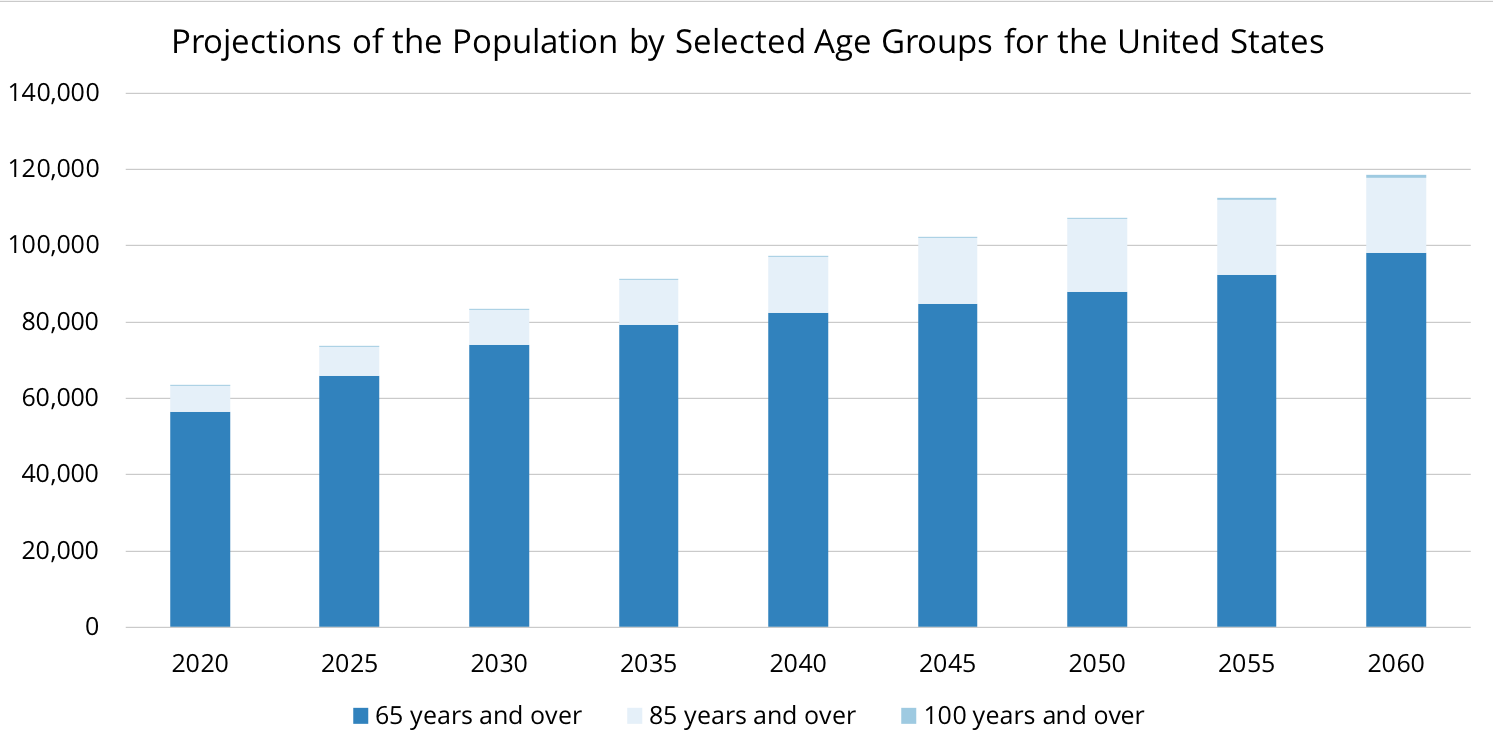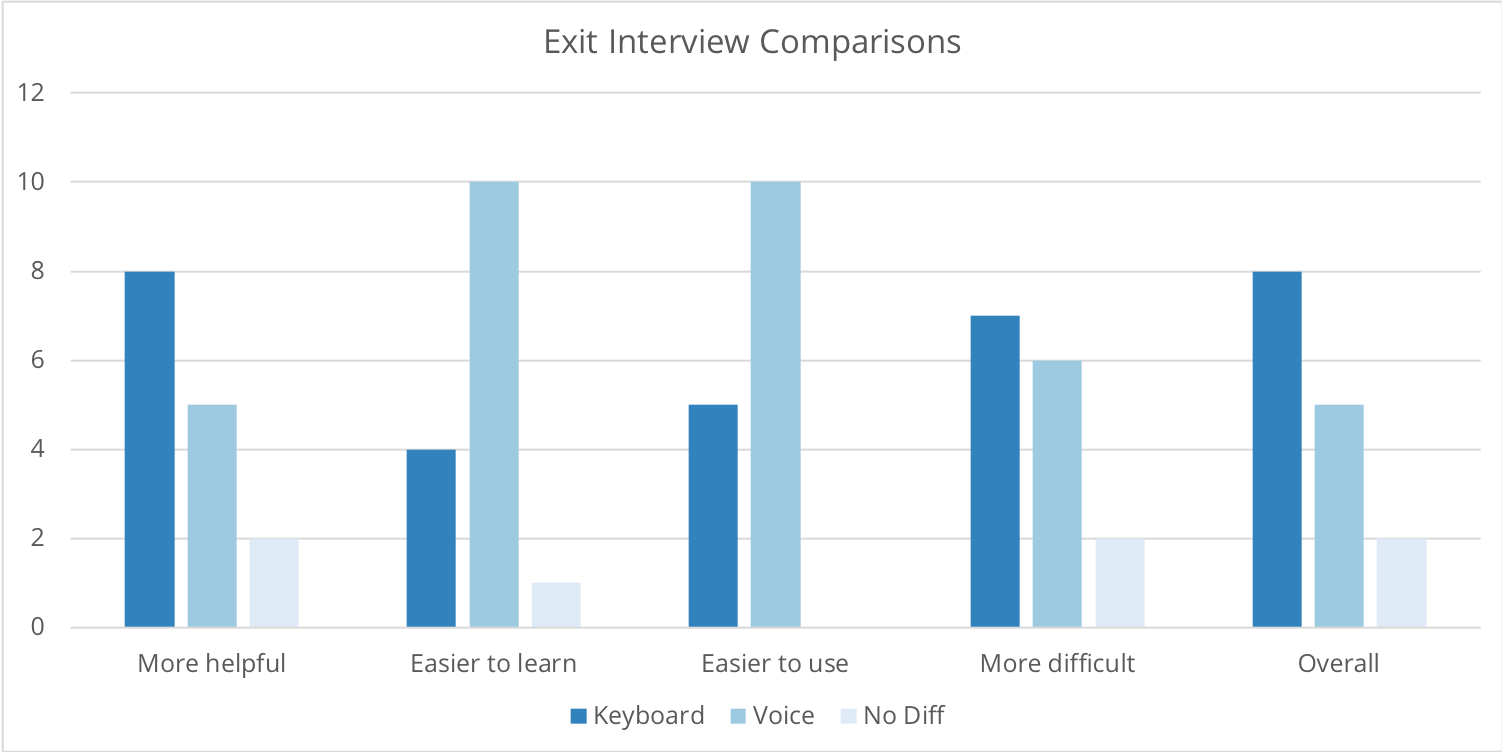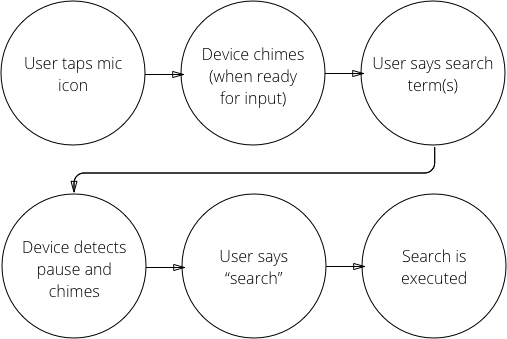VUI Opportunities for Aging Users with University of Baltimore
Voice Technology | User Research | Usability
The Challenge
Assessing Opportunities for Aging Users
The United States is currently experiencing a dramatic aging of the population. Life-expectancy has improved from 47.3 in 1900 to 78.9 in 2015 [1]. As people are living longer and the number of seniors (people over the age of 65) is growing rapidly. Data [2] shows that in 2016, there were 49.2 million people over the age of 65 and that they comprised 15.2% of the population. By 2060, the number of people over the age of 65 is expected to grow to 98.2 million, and comprise nearly 25% of the population [2].

Among the technologies available, Voice-Enabled User Interfaces may hold potential for increased usability for seniors. Many voice systems are efficient, intuitive, and do not require the fine-motor skills that older users can find challenging. However, research in this field is still limited and more work is required to identify the forces that shape user’s perceptions of VUIs [3].
| Benefits | Challenges |
|---|---|
| Hands Free | Opaque |
| Efficient | Inaccurate |
| Intuitive | Vulnerable to Attack |
| Rich with Meaning |
My Role
Conducting and Publishing Novel Research
As the first author and primary researcher of this work, I was responsible for all aspects of its completion including reviewing the literature, proposing a rigorous and appropriate method, conducting usability test sessions, analyzing data, and reporting the findings. This work was carried out under the mentorship of Greg Walsh, my thesis advisor.
The Process
At A Glance
Methods for Evaluating Multimodal Interface Usability
In my master’s thesis, Factors Affecting Seniors’ Perceptions of Voice-enabled User Interfaces, I observed and interviewed 15 seniors (over the age of 65) while they searched for information online using a multimodal voice and touch interface (VTI) and a traditional keyboard/mouse interface (KMI). The observations and interview responses from each session were analyzed to identify differences between VTIs and KMIs; and identify the major factors that affect user perceptions of each system.

Replicating Reality
I specifically chose to set up this study as a comparison of the keyboard system and the voice system because it better represented the choices that users make in real life. Perceptions of usability do not exist in a vacuum and even the best voice system will remain unused unless they can match the usability of widely available keyboard systems.
The Results
Emerging Opportunities vs. Ingrained Behaviors
The key finding from the study was that seniors perceived the two interfaces differently in terms of learnability, usability, ease of understanding, and helpfulness. More specifically, the seniors interviewed perceived the VTI as more learnable and usable but the KMI as easier to understand and more helpful. The participants also ultimately preferred the KMI overall - although there was strong evidence that this was governed by deeply ingrained user habits and may not remain true as later generations age.

Despite the promise of VTI in learnability and usability, these observations and interviews also indicated the current design of the experimental VTI (Google Voice Search) posed usability challenges for seniors. The seniors interviewed were significantly affected by timeout errors, jarring audio playback and a lack of visual cues. To guide future designs, I suggested a series of interaction patterns aimed at mitigating these problems.

New Questions and Future Work
Although this study provides a preliminary understanding of how seniors interact with VUIs and the factors that shape their perceptions of those systems, future work is required to test the key findings of the study and provide further insight into how these findings can best be applied by designers to support seniors.
Resources and References
Full text of Factors Affecting Seniors’ Perceptions of Voice-enabled User Interfaces (pdf) as submitted to University of Baltimore in fulfillment of Master’s of Science in Interactive Design and Information Architecture.
Extended Abstract (pdf) as submitted to the ACM CHI Conference on Human Factors in Computing Systems 2018.
References
- 2017. Health, United States, 2016 Individual Charts and Tables: Spreadsheet, PDF, and PowerPoint files. (July 2017). https://www.cdc.gov/nchs/hus/contents2016.html
- US Census Bureau.2017.The Nation‘s Older Population Is Still Growing, Census Bureau Reports. (June 2017). https://www.census.gov/newsroom/press-releases/ 2017/cb17100.html
- Grace M. Begany, Ning Sa, and Xiaojun Yuan. 2016. Factors Affecting User Perception of a Spoken Language vs. Textual Search Interface: A Content Analysis. Interacting with Computers 28, 2 (March 2016), 170–180. DOI:http://dx.doi.org/10.1093/iwc/iwv029
- Cover image was derived from:Thoracic landmarks anterior view.svgLateral chest landmarks.svg, CC BY 2.5, https://commons.wikimedia.org/w/index.php?curid=20544534